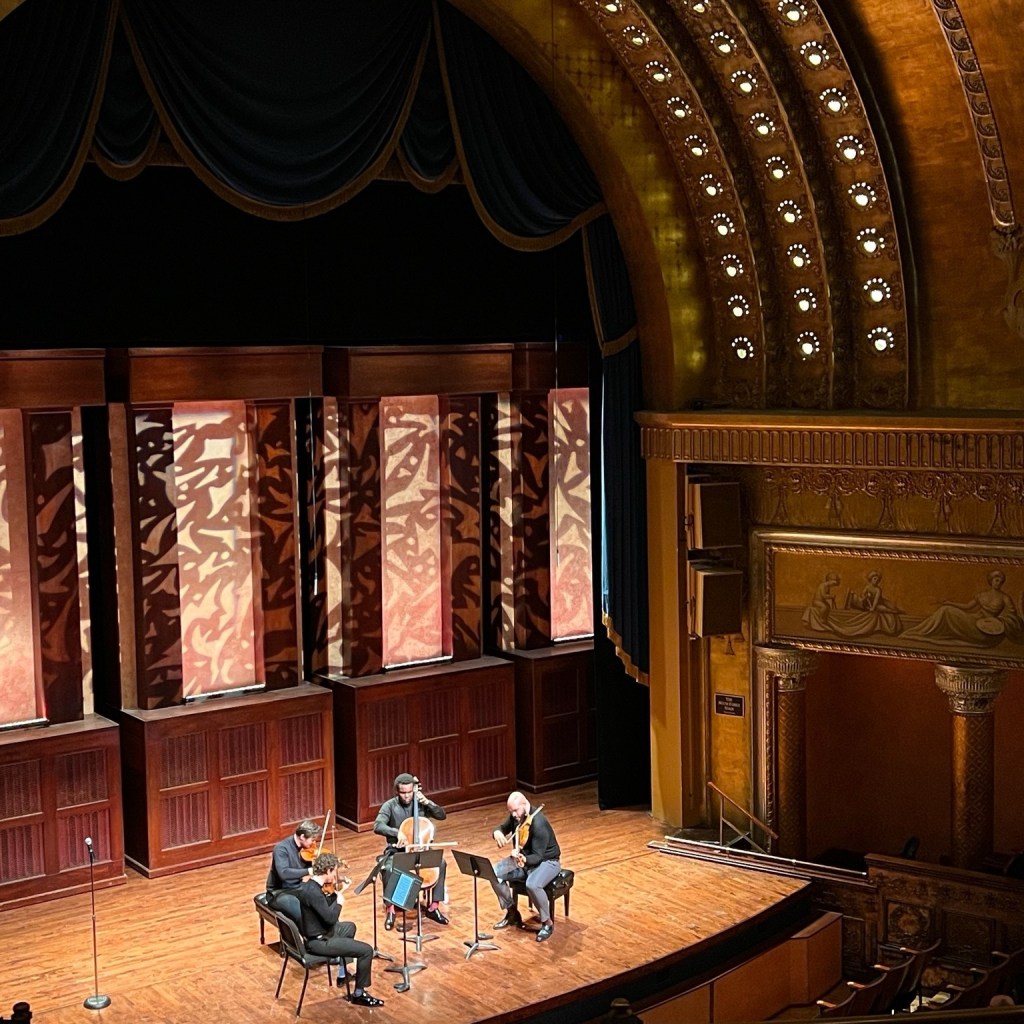Isidore String Quartet
Southern Theatre
Columbus, OH
February 24, 2024
Dinuk Wijeratne: The Disappearance of Lisa Gherardini
Aida Shirazi: umbra
Bach: Contrapunctus I-IV from The Art of Fugue, BWV 1080
Britten: String Quartet No. 2 in C Major, Op. 36
Chamber Music Columbus’ February program introduced the youthful Isidore String Quartet. All recent Juilliard grads, the quartet has already been acknowledged with an Avery Fisher Career Grant and first prize at the Banff International String Quartet Competition. Their Saturday night program at the Southern Theatre was refreshingly diverse and enterprising.

A 2022 work from Sri Lankan composer Dinuk Wijeratne opened, a quantity this ensemble first encountered at the Banff Competition. The Disappearance of Lisa Gherardini recounts in musical – and quite theatrical – terms the 1911 heist of the Mona Lisa from Louvre. A cello melody opened, suggesting the genesis of the painting, with the others dispersed around the stage, playing gestures that in the composer’s own words “evoke gentle brushstrokes.” A central section suggested the heist, scheming and unsettling, while the cello resounded again in the concluding material, signifying the painting at last returned to its rightful place.
Iranian composer Aida Shirazi was represented with the 2011 work umbra, a title meant to evoke “a process in which the musical events unfold glacially.” Extensive use was made of extended techniques – harmonics and quarter-tones which painted an otherworldly soundscape, all but dissipating into the ether upon its conclusion.
Though generally performed on the keyboard, Bach’s crowning Art of Fugue has a long tradition of being appropriated for other instruments. The first four Contrapunctus were given in exacting transcription for string quartet. The second violin introduced the stately theme, with the transcriptions arranged in such a way that each instrument rotated giving the first presentation of the subject. The quartet boasted a sharp contrapuntal clarity, particularly evident in the fearsome complexities of the final selection. The string quartet is a medium that came after the composer’s time, but Isidore certainly made a compelling case for listening to Bach through this lens.
The program closed with Britten’s String Quartet No. 2, dating from 1945 – a watershed year in British history as well as the 250th anniversary of Henry Purcell’s death, both of which are central to the quartet. Wide-spaced texturing characterized the opening movement, a plaintive atmosphere in due course interrupted by more energetic material. The scherzo movement was in turn a ferocious if brief affair, putting Isidore’s virtuosity on full display.
The closing Chacony (as chaconne would have been spelled in Purcell’s time and place) is the most overt nod to the elder composer, and the heart of the work, clocking in at more than the first two movements combined. Its theme was derived from Purcell’s Chacony in G minor, Z730, and three groups of six variations respectively explored the source material’s harmony, rhythm, and counterpoint. Solo cadenzas punctuated each grouping, and a final set of three variations offered a lush chordal finale.
